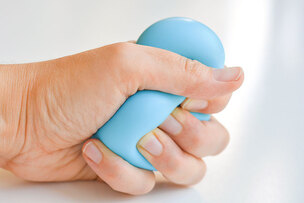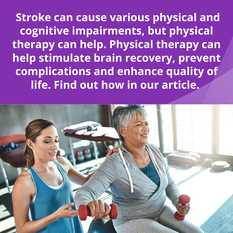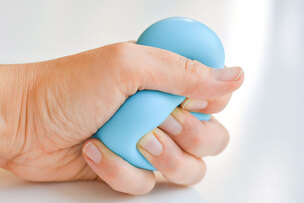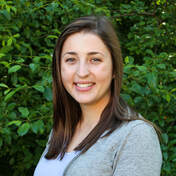|
Welcome to the June 2023 issue of In Focus with PT Plus Physical Therapy What's New at PT Plus  Find us at the West Bend Farmers Market! PT Plus is looking forward to being a vendor at the upcoming West Bend Farmers Market. You can join us along with dozens of local farmers and food producers, entertainment, and local businesses and crafters. We will be there Saturday, June 17th.  We're Closed - July 4th PT Plus will be closed Tuesday, July 4th in observance of Independence Day. Our offices will be open the rest of the week. Recent Google Review Pam Wolter, ★★★★★ Great staff! My therapist does a variety of therapies to make my shoulder feel better and gives me exercises to do at home. I tell everyone about PT Plus!   Physical Therapy With Play-Dough Summer break is here, and on rainy days, it's great to have an activity to keep the little ones busy. Last weekend we attended the Port Festival of the Arts, and we brought along play-dough for the kiddos, with a recipe on how to make more at home. Read our most recent blog post for information about using hands-on-activates like playing with play dough to help hand intrinsic strength and coordination. Hand intrinsic strength and coordination are essential for everyday tasks. These muscles help define the arch of the hands, bend the knuckles, and perform opposition of the thumb and fingers. This helps us perform tasks Read More...
0 Comments
 Stroke is a serious medical condition that occurs when the blood supply to a part of the brain is interrupted, causing brain cells to die. Stroke can cause a variety of symptoms like weakness, paralysis, speech difficulties, memory loss, cognitive problems and emotional changes. Physical therapy is an important part of recovery from a stroke that aims to help stroke survivors regain their functional mobility and independence. PT helps stroke survivors stimulate damaged nerves and muscles, promote circulation to affected areas of the brain to promote healing, learn to move and use their affected body parts as much as possible, regain mobility and strength, as well as to prevent or reduce complications such as muscle stiffness, spasticity, pain and falls. Physical Therapy After Stroke Physical therapy usually begins as soon as possible after the stroke, ideally within two days. The duration and intensity of PT depend on the severity and type of stroke, the medical status of the patient, as well as the individual's goals and needs. Stroke recovery doesn’t just involve a physical therapist, though. It takes a team of professionals, including a physiatrist (a doctor who specializes in rehabilitation), a neurologist (a doctor who specializes in brain and nervous system disorders), nurses, an occupational therapist, a speech-language pathologist, a dietician, a social worker, a neuropsychologist and a case manager. The physical therapist will assess strength, balance, coordination, range of motion, sensation, pain and functional abilities. Based on the assessment and the individual's goals, the physical therapist will design a personalized treatment plan that may include interventions like:
The Benefits of Physical Therapy After Stroke Physical therapy has lots of benefits for stroke survivors, such as:
Physical therapy after stroke can also have positive effects on the brain itself. Research has shown that physical activity can stimulate the growth of new brain cells, formation of new connections between brain cells and growth of new blood vessels in the brain. These processes can help with healing and recovery after stroke. Physical therapy after stroke is not a one-size-fits-all approach. It requires individualized assessment, planning and evaluation. It also requires active participation and collaboration from the stroke survivor, their family and their caregivers. Stroke recover is a long-term process that requires patience, perseverance and dedication. However, physical therapy can be rewarding and empowering for stroke survivors. It can help them regain their functional mobility and independence, improve their quality of life and well-being, prevent or reduce complications and make the most of their recovery. References
 Hand intrinsic strength and coordination are essential for everyday tasks. These muscles help define the arch of the hands, bend the knuckles, and perform opposition of the thumb and fingers. This helps us perform tasks like holding a pencil, manipulating scissor, eating with utensils, brushing our teeth, and writing. One important intrinsic muscle is the lumbricals which have the job of bending our knuckles and extending the smallest joints at the end of our fingers. For example, you may use these muscles to make a hand puppet or to hold a plate. The lumbricals are also used in handwriting to advance the pencil or pen in an upward motion. Our hands need the strength and endurance to be able to correctly perform the upstroke and re-tracing of letters which are required to write the letters a, d, g, h, m, n ,p , q, r, u, v, and w. Most of these motions are developed and perfected as we are younger, but there are many things we can do to help these muscles develop and stay strong. Using hands-on-activates like playing with play dough can help. Rolling the play dough into a ball with one hand, or squeezing play dough with tongs is a great way to strengthen the lumbricals. Another very important group of hand intrinsic muscles are the abductors, flexor pollicis brevis, and the opponens pollicis. These muscles help to rotate the thumb and bring our fingers together for opposition which is used for picking up small items. To work with these muscles we can practice by rolling the play dough into a long log or snake. Hand intrinsic strength is also needed to develop hand eye coordination, cognitive, and sight perception. Being able to position loose part into and over surfaces, cutting the correct piece, and inserting or threading items all use hand eye coordination and sight perception. These skills help us sense our environment, interpret what we are seeing, organize information, and create a visual memory. Play dough can be used to develop hand eye coordination and sight perception when we cut the play dough with scissors, create figures, form letters, or recreate scenes. There are many great ways to encourage the development of the hand intrinsic muscles and play dough is a great tool. Use the recipe below to make you own play dough and make the next playtime a purposeful playtime! Ingredients:
Mix the flour and salt in a large bowl. In a separate bowl mix together the water, a few drops of food coloring and the oil. Pour the colored water into the flour mix and bring together with a spoon. Knead together to form a smooth, pliable dough.  These PT Pro Tips are brought to you by our West Bend physical therapist, Jordan Weyker, PT, DPT. Jordan specializes in women's health, pediatric care, and aquatic therapy. Outside of treating individuals, she enjoys watching her Chicago Cubs play the Brewers in her hometown of Chicago or Milwaukee. Jordan also enjoys traveling, camping, Kayaking, fishing, and traveling back to Haiti whenever she can. |
Archives
March 2024
Categories |
|
Central phone: 262-796-2850
Central fax: 262-796-2851 Central email: patientcare@ptplus.com Website by RyTech, LLC
|
|
